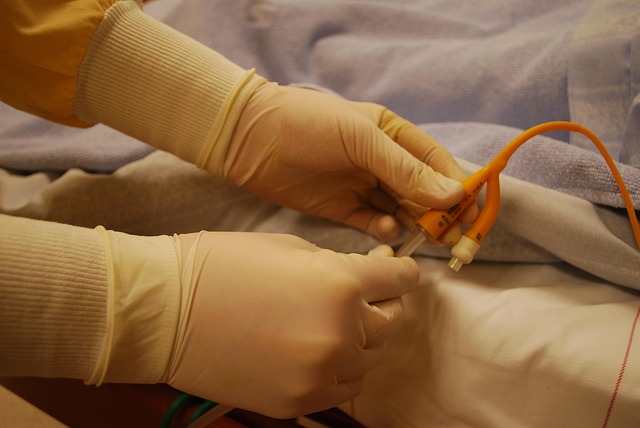How to Reduce Angioedema Swelling: Relief Measures and Medical Care
Angioedema is characterized by deep swelling beneath the skin's surface, often appearing around the eyes, lips, hands, feet, and sometimes affecting the throat and digestive tract. Unlike common skin allergies, angioedema can be uncomfortable, painful, and in severe cases, potentially dangerous when it affects breathing. Understanding how to reduce this swelling is crucial for those who experience angioedema episodes, whether they occur occasionally or as part of a chronic condition. This article explores practical approaches to managing angioedema, from identifying causes to implementing effective relief measures and seeking appropriate medical care.

Common Causes of Angioedema Swelling and Its Triggers
Angioedema can develop from various underlying factors, with allergic reactions being among the most common causes. Foods such as shellfish, nuts, and certain fruits frequently trigger allergic angioedema. Environmental allergens like pollen, animal dander, and insect stings may also initiate swelling responses. For some individuals, physical factors such as extreme temperatures, pressure on the skin, or intense exercise can precipitate an episode.
Medications represent another significant trigger category. Non-steroidal anti-inflammatory drugs (NSAIDs) like ibuprofen, certain antibiotics, and blood pressure medications have been associated with angioedema development in susceptible individuals. Stress and anxiety can exacerbate symptoms or trigger episodes in those with a predisposition to angioedema.
Hereditary angioedema (HAE) is a genetic form of the condition that occurs due to deficiencies in blood proteins that regulate inflammation. Unlike allergic angioedema, HAE episodes often occur without an obvious external trigger, making management particularly challenging for affected individuals.
Identifying Early Signs and Symptoms
Recognizing angioedema in its early stages allows for quicker intervention and potentially milder episodes. The initial signs typically include a tingling or burning sensation in the affected area, often preceding visible swelling. This sensation may develop gradually over minutes to hours before noticeable swelling appears.
The swelling itself is characterized by its depth—unlike hives that affect the surface of the skin, angioedema involves deeper tissue layers. The affected areas may feel warm to the touch and can be painful or tender rather than itchy. Common locations include the face (particularly the lips, eyes, and cheeks), hands, feet, genitals, and sometimes the tongue or throat.
Warning signs requiring immediate medical attention include difficulty breathing or swallowing, chest tightness, hoarseness, or a sensation of throat closing. These symptoms could indicate laryngeal angioedema affecting the airway, which constitutes a medical emergency requiring prompt intervention.
Home Care Measures That May Help Reduce Swelling
When experiencing mild to moderate angioedema without respiratory involvement, several home care strategies may help manage symptoms. Cool compresses applied to swollen areas for 10-15 minutes several times daily can help reduce inflammation and provide comfort. Elevating the affected body part when possible (particularly limbs) can help minimize fluid accumulation and decrease swelling.
Avoiding tight clothing or jewelry around swollen areas prevents additional pressure that might worsen symptoms. Maintaining proper hydration supports overall circulation and may help the body process and eliminate inflammatory compounds more efficiently.
Over-the-counter antihistamines may provide relief for allergic angioedema, particularly when taken at the first sign of symptoms. Non-sedating options are available for daytime use, while traditional antihistamines with sedative effects might be helpful when symptoms interfere with sleep. Cold compresses and calamine lotion can sometimes soothe affected skin, though these address discomfort rather than the underlying swelling.
Medical Treatments for Angioedema
Professional medical intervention becomes necessary when home measures prove insufficient or when angioedema affects breathing. Healthcare providers may prescribe stronger antihistamines or corticosteroids to reduce inflammation in allergic angioedema cases. For severe acute episodes, epinephrine (via auto-injector) may be recommended, particularly for individuals with known risk factors for anaphylaxis.
For recurrent or chronic angioedema, healthcare providers may suggest allergy testing to identify specific triggers. This typically involves skin tests or blood tests that detect antibodies to common allergens. Once triggers are identified, immunotherapy (allergy shots) might be recommended to gradually desensitize the immune system.
Hereditary angioedema requires specialized treatment approaches focused on preventing attacks and managing acute episodes when they occur. Regular follow-up appointments help monitor the condition and adjust treatment plans as needed based on symptom patterns and response to interventions.
Long-Term Management and Preventing Recurrence
Managing angioedema effectively over time requires a comprehensive approach. Maintaining a detailed symptom diary can help identify patterns and potential triggers by documenting when episodes occur, their severity, duration, and any preceding factors like foods eaten, environmental exposures, or stressful events.
Creating an emergency action plan is essential, particularly for individuals who have experienced severe episodes. This plan should outline steps to take when symptoms appear, medication instructions, and when to seek emergency care. Close contacts and family members should be familiar with this plan, especially for individuals with hereditary angioedema or history of severe reactions.
For those with allergic angioedema, consistent trigger avoidance represents the most effective preventive strategy. This might involve dietary modifications, environmental controls for allergens, or medication adjustments in consultation with healthcare providers.
Lifestyle Adjustments for People Prone to Angioedema
Several lifestyle modifications can support overall management for individuals susceptible to angioedema. Stress management techniques such as mindfulness meditation, yoga, or deep breathing exercises may help reduce the frequency of stress-induced episodes. Regular physical activity, when not a trigger itself, can improve overall health and potentially reduce inflammatory responses.
Maintaining a consistent sleep schedule promotes immune system function and stress management. Adequate sleep (7-9 hours for most adults) supports the body’s natural anti-inflammatory processes.
Dietary considerations extend beyond avoiding specific food triggers. Some individuals benefit from an anti-inflammatory diet rich in fruits, vegetables, omega-3 fatty acids, and whole grains while limiting processed foods, refined sugars, and alcohol. Food journaling can help identify less obvious dietary triggers that might contribute to recurrent episodes.
This article is for informational purposes only and should not be considered medical advice. Please consult a qualified healthcare professional for personalized guidance and treatment.




